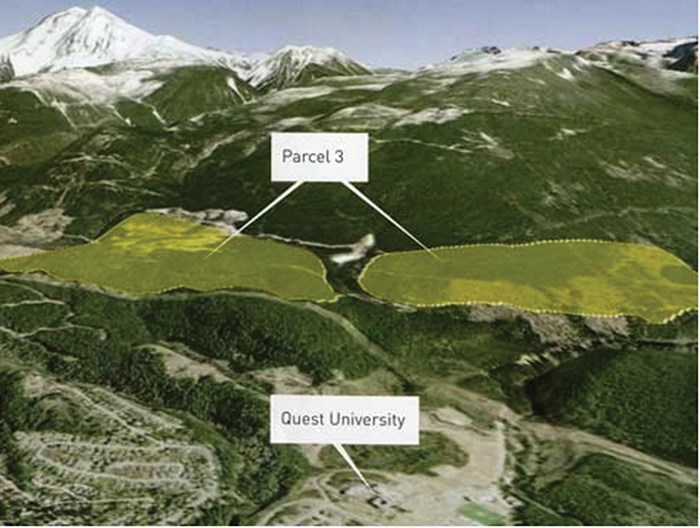While the Squamish Nation purchased Crown land above Quest University in 2011, it is likely going to be some time before a satellite reserve will be created there.
The Squamish Nation acquired the more than 200-hectare property beyond the Garibaldi Highlands from the province for future housing for its members.
The need for housing for Squamish Nation members has long outstripped the housing available, with over 1,000 members currently on a wait list.
The property known as Parcel 3, is just outside the District of Squamish’s boundaries.
The property’s sale to the Nation was part of a larger land deal with the province.
“This is an historic day for the Squamish Nation,” said Squamish Nation chief Gibby Jacob at the time of the deal for a total of 467 hectares (1,154 acres) of Crown land in the Squamish area for $16.3 million.
“The amount of land we are acquiring is roughly equal to the amount of land that was taken from us by the Pacific Great Eastern Railway in 1913. The land is intended to be used by the Squamish Nation to develop housing for our members,” Jacob said.
As part of the Nation’s current housing review, members were asked if they would be interested in a single-detached home in the Squamish Valley or on the property above Quest.
Approximately 50 per cent of respondents said they would be interested.
In a draft plan presented to the Squamish Nation’s Special General Assembly in June, the proposal is for 600 homes for members to be built on addition to reserve lands in the next five years.
“That is a long-term plan,” Chief Ian Campbell said.
Campbell said Squamish Nation representatives have been working with the federal government through Indigenous and Northern Affairs Canada (INAC), on the Additions to Reserve process, which he describes as “quite glacial. “
“The average turn-around time for First Nations in Canada was 17-25 years to achieve some sort of addition to reserves,” he said.
In 1972, an “additions-to-reserve” process was created whereby First Nations could add to their reserve land.
A stumbling block for First Nations is lack of support from municipalities.
“The District of Squamish have been clear they don’t support additions to reserves, so that becomes a bit of a dynamic that we continue to work through in order to get the lands to qualify,” said Campbell.
Prior to the purchase of the land behind Quest, in 2011, the Nation and the District of Squamish signed an Intergovernmental Accord that included an agreement that the District would support land-use provisions of roughly 485 hectares (1,200 acres) of land bought by the Nation.
But the agreement, which has yet to be ratified, has a clause stating,
“The Parties acknowledge that the District does not agree at this time to support any additions to Squamish Nation Reserve lands.”
Mayor Patricia Heintzman said the issue comes down to municipal servicing of the property for homes.
“We have no plans to bring infrastructure up there, pipes and that type of thing,” she said.
“It would be very costly for the taxpayers of Squamish to pay for that type of infrastructure at this point in our evolution,” she added.




